The indicator refers to the effect of carbohydrates on changes in blood glucose (sugar) levels, is considered the basis for the prevention of diabetes, achieving ideal body weight. It is recommended to use the glycemic index of products in the table below, for those who want to lose weight, for diabetics and for all who have a healthy diet as a priority.
Material Content:
What is GI Products
Carbohydrates in food differently change the concentration of sugar in the blood. This indicator is 100 when using pure glucose. Thus, GI is a relative value convenient for characterizing food products.
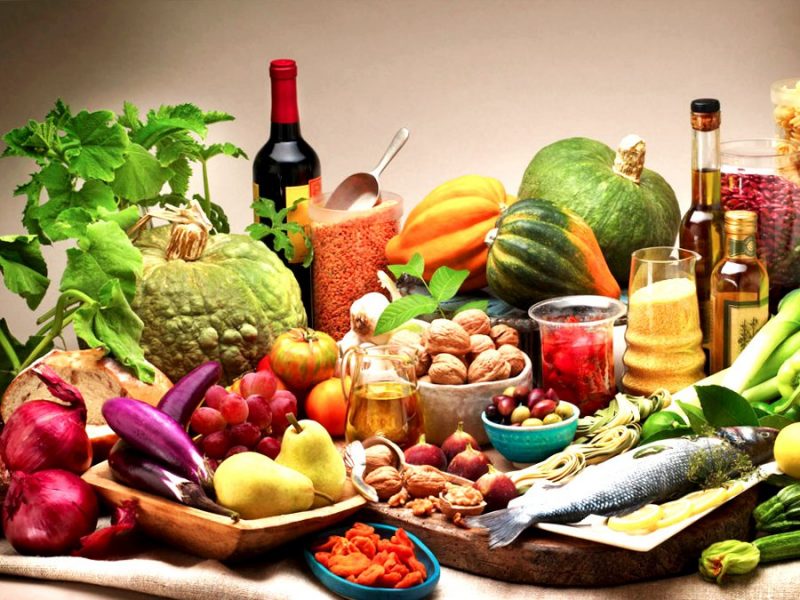
Polysaccharides belong to the "slow" carbohydrates. Starch, dextrins, soluble dietary fiber in the gastrointestinal tract change in several stages, longer digested and absorbed. The concentration of sugar in the blood grows smoothly, the insulin level does not "jump".
Foods with a low glycemic index after ingestion do not increase blood sugar levels as quickly and significantly as foods with high GI.
Fructose, glucose, sucrose, maltose and lactose are simple sugars or monosaccharides. They are easily absorbed by the human body, can cause a rapid increase in blood glucose. The pancreas reflexively produces more insulin. Increased hormone secretion is accompanied by the absorption of glucose, if it is not consumed with increased physical exertion. Part of glucose is associated with the formation of glycogen, a storage carbohydrate in the liver and muscles.
Increased metabolism persists 2–4 hours after eating, even without the intake of other nutrients. As a result, blood sugar levels may drop. After 2–4 hours, hunger reappears.The vicious cycle ultimately leads to body fat. For weight loss, you should choose foods with a low glycemic index. It is necessary to pay attention to GI to prevent diabetes, coronary heart disease.
Table: Glycemic Index of Products and Calories
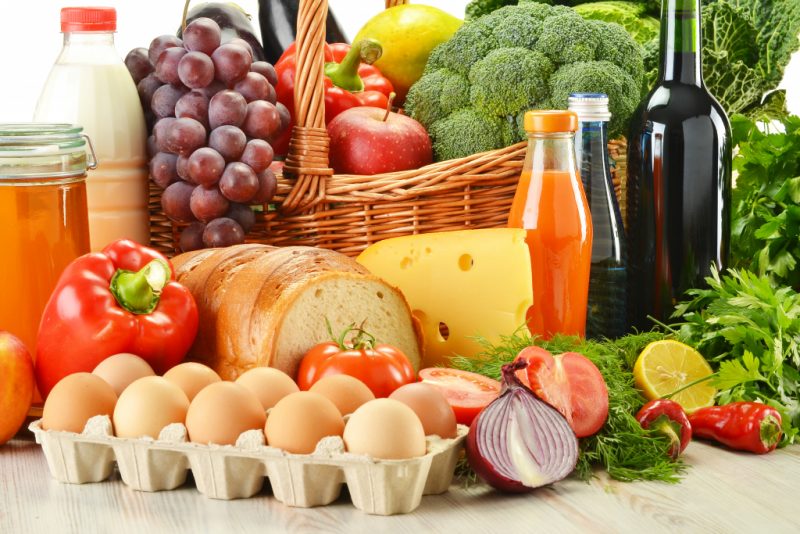
Optimum for the prevention of chronic diseases and obesity is considered:
- low GI of products - from 0 to 55 (in other sources 0–45).
- average values are from 56 to 75 (or 46–59).
- high glycemic index - from 76 to 100 (or from 60).
Consider how the glycemic index and calorie intake are related.
Carbohydrates are important energy components in food. They eventually turn into glucose, which is oxidized with the release of energy. Upon assimilation of 1 g of carbohydrates, 4.2 kilocalories (17.6 kilojoules) are formed. With simple and complex sugars, a person receives up to 60% of the required calories.
An adult with moderate exercise is recommended to consume 350-400 g of digestible carbohydrates per day. Of this amount, simple sugars should be no more than 50–80 g. You can improve your health and prevent the appearance of extra pounds by choosing the “right” carbohydrates
Low glycemic index
Low GI and calorie values are a characteristic feature of fresh fruits and vegetables. They also contain a relatively large amount of pectin (0.4-0.6%), fructose. Whole grains, pasta from durum wheat, and legumes have low GI.
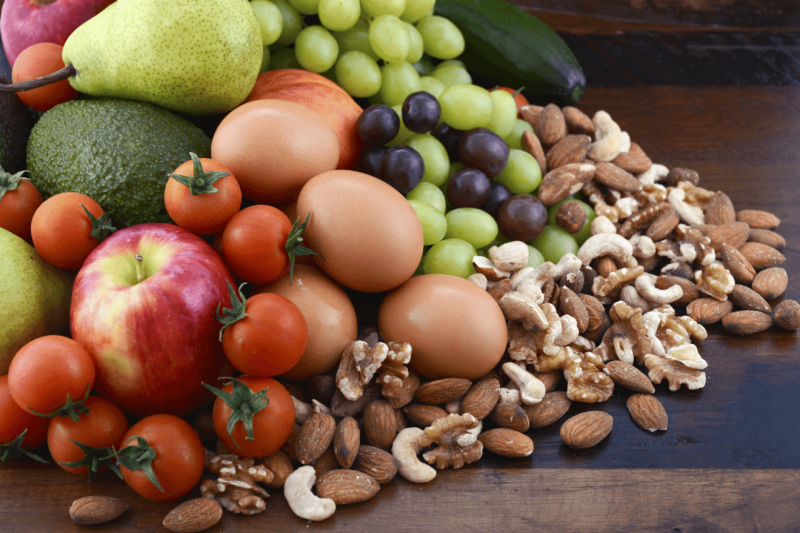
Food table
| Products | Glycemic index | Calorie content 100 g of product, kcal |
|---|---|---|
| Leaf lettuce | 9 | 15 |
| Fresh cucumber | 15 | 16 |
| Squash | 15 | 17 |
| Broccoli | 15–22 | 34 |
| Cauliflower | 15 | 25 |
| Tofu (raw) | 15 | 76 |
| Peanut | 15 | 567 |
| Natural fat-free yogurt | 27–35 | 59 |
| Fresh carrots | 30 | 41 |
| Fresh apple | 35–38 | 54 |
| Peach, Apricot, Pear, Mandarin, Grapefruit | 34–42 | 39 |
| Chickpeas | 35 | 364 |
| Fresh green peas | 35 | 69 |
| Wholemeal spaghetti | 38 | 158 |
| Grape | 44 | 67 |
| Brown rice | 45 | 111 |
The listed products contain simple and complex carbohydrates. The first are quickly absorbed, as a result of metabolic reactions it turns into glucose. Fructose is less absorbed into the bloodstream, is more quickly involved in metabolism and is delayed by the liver. Grapes contain 7.7% fructose, pears and apples - from 6 to 7%, raspberries, watermelon, gooseberries - 4%.
Fructose, compared with glucose, more smoothly increases blood sugar levels, does not provoke the development of diabetes or exacerbation of an existing disease.
It is believed that pectin is not absorbed in the digestive tract, but this is not entirely true. Up to 95% of pectin is cleaved in the colon with the participation of beneficial microflora. This process gives an insignificant share of energy to the human body - only 1%; which practically does not affect the level of glucose in the blood.
With average gi
The glycemic index table helps you choose foods that don't cause a sharp increase in blood sugar and insulin release.
| Products | GI |
|---|---|
| Meat and fish | 50 |
| Kiwi | 50 |
| Apple juice | 50 |
| Corn grits | 53 |
| Wholemeal bread | 52 |
| Oatmeal | 55 |
| Shortbread | 55 |
| Muesli | 55, with sugar 65 |
| Spaghetti | 55 |
| A pineapple | 59–66 |
| Lasagna | 60 |
| Banana | 60 |
| Honey | 32–69 |
| Jacket potato | 65 |
| Whole wheat bread | 65 |
Sucrose in beet and cane sugar is formed from glucose and fructose. In the intestine, it splits into its constituent parts and is absorbed into the blood. In this case, it is possible to exceed a safe indicator of glucose in the blood, which leads to increased secretion of insulin.
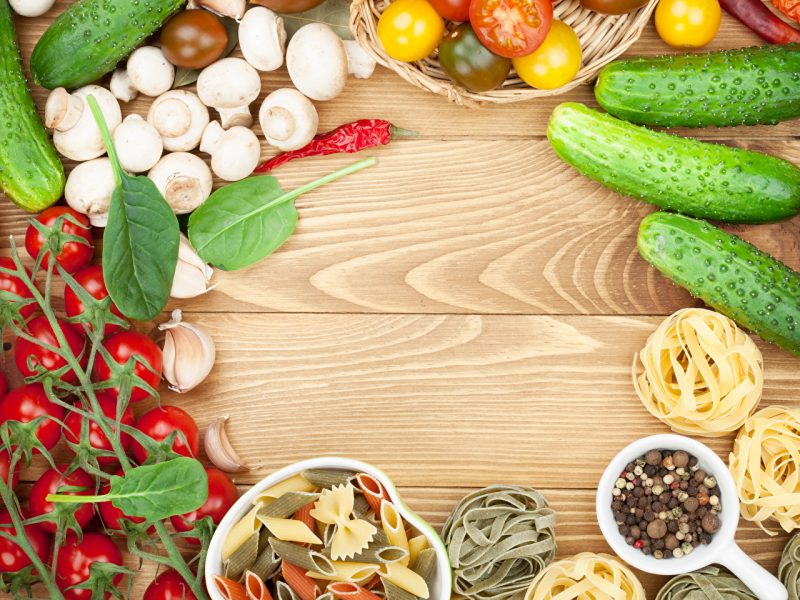
Honey contains a relatively large amount of fructose - up to 37%, glucose, proteins, amino acids, enzymes, hormones are also present. Varieties obtained from one plant species have low and medium GI. The calorie content of honey also varies. On average, every 100 g of a sweet product has an energy value of about 300 kcal.
High Glycemic Index
The glycemic index value does not coincide with the content of various sugars in food. Therefore, some foods with a relatively low proportion of carbohydrates may have medium and high GI.Its value is determined, first of all, by the ability to influence the level of glucose in the blood.

Food table
| Products | GI |
|---|---|
| Beet sugar | 68–70 |
| White bread for toast | 73 |
| Pumpkin | 72 |
| Watermelon | 75 |
| Muesli with nuts, raisins | 80 |
| Cracker | 80 |
| Mashed potatoes | 85 |
| Cornflakes | 85 |
| White rice | 87–90 |
| Canned Apricots | 90 |
| Baguette | 95 |
| Glucose | 100 |
Various ratios of glycemic index and caloric value are observed. For example, mashed potatoes have a GI of 85, consumption of 100 g of the product provides 198 kcal. Different types of beer have a high glycemic index, relatively low calorie content - from 40 to 60 kcal gives (100 g of foamy drink).
Table for diabetics
Normal blood sugar levels range from 70 to 100 mg per 100 ml. In other units, the same indicator is from 3.9 to 5.5 mmol / L. Insulin regulates glucose metabolism, its content in the blood. Even in healthy people, sugar levels increase after meals to 160 mg per 100 ml. Insufficient production of pancreatic hormone leads to impaired glucose uptake, an increase in its content to 200-400 mg in 100 ml of blood, and the development of persistent hyperglycemia.
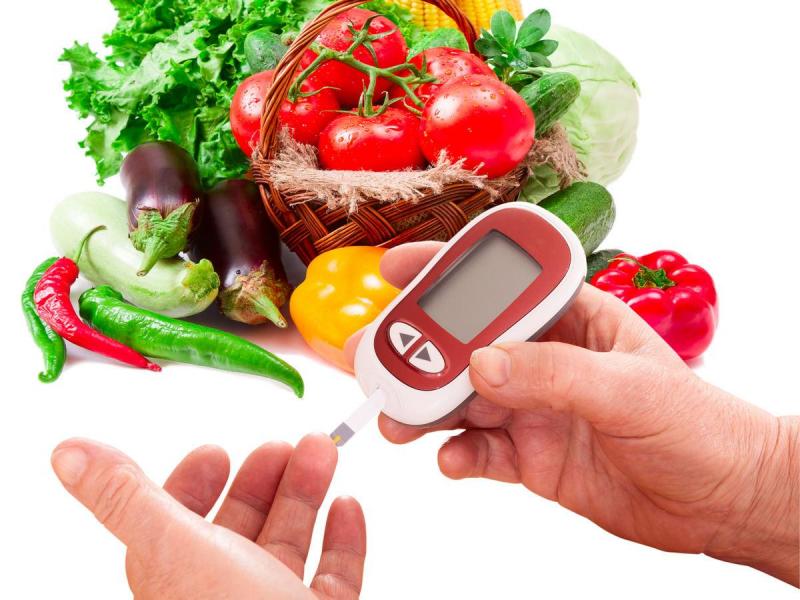
The basic rule of nutrition for patients with diabetes: consume more vegetables and fruits, whole grains, reduce the amount of "fast" carbohydrates and fats.
Low GI Diabetic Table
| Products | Glycemic index |
|---|---|
| Leaf lettuce, broccoli, tomatoes | 9–15 |
| Different types of cabbage | 15 |
| Sweet pepper | 15 |
| Spinach, Asparagus, Radish | 15 |
| Fresh cucumber | 15 |
| Boiled lentils | 25 |
| Kefir low-fat | 25 |
| Skim milk | 27 |
| Cereal bread | 40 |
| Fresh green peas | 40 |
| Boiled Beans | 40 |
Fruits and vegetables contain a sufficient amount of nutrients, vitamins and mineral elements. Plant foods that have low GI do not cause a rapid increase in blood sugar. The exceptions are watermelon and pumpkin with a high glycemic index (75).
It is preferable for diabetics to have a Mediterranean diet, which is characterized by the consumption of a large number of vegetables and fruits, and the insignificant use of animal fats for food. The diet of the population of the countries of the Mediterranean basin is dominated by pasta made from durum wheat, which slowly increase the level of sugar in the blood, compared with bread and rice. Olive oil, added to salads and other dishes, contains polyunsaturated fatty acids, antioxidants.
GI for weight loss - how to use?
Many nutrition and health experts believe that it is most important for diabetics to consume foods with a low glycemic index. The same principle is used for weight loss.

A low-carb diet allows you to quickly lose weight in six months. However, in the long run, the result may not be as impressive. The greatest effect is obtained with a low-calorie diet.
Low GI Low Calorie Food Table
| Products | Calorie content 100 g of product, kcal |
|---|---|
| Chinese cabbage | 11 |
| Cucumber | 12 |
| Radish | 14 |
| Mushrooms | 15 |
| Spinach | 15 |
| Fresh tomatoes, tomato juice | 17 |
| Celery | 18 |
| Zucchini | 19 |
| Eggplant | 22 |
| Cauliflower | 22 |
| Green beans | 25 |
| Broccoli | 26 |
| Strawberry | 32 |
| Raspberry | 33 |
| Buttermilk | 35 |
| Apple juice | 37 |
| Grapefruit | 38 |
| Blackberry juice | 38 |
| Clementine | 39 |
| Apricot | 42 |
| Oysters | 46 |
| Pear | 51 |
| Fresh grapes, grape juice | 68 |
| Tofu | 85 |
| Dogrose | 94 |
| Cottage cheese | 102 |
| Trout | 102 |
| Red beans | 105 |
Calories contained in food are not completely spent by the body on vital processes and physical activity. Then the energy is stored in the molecules of glycogen and fat. If you use foods low in fat, the optimal ratio of carbohydrates and proteins, then you can avoid unwanted "reserves". For weight loss, both food choices and physical activity are important.












